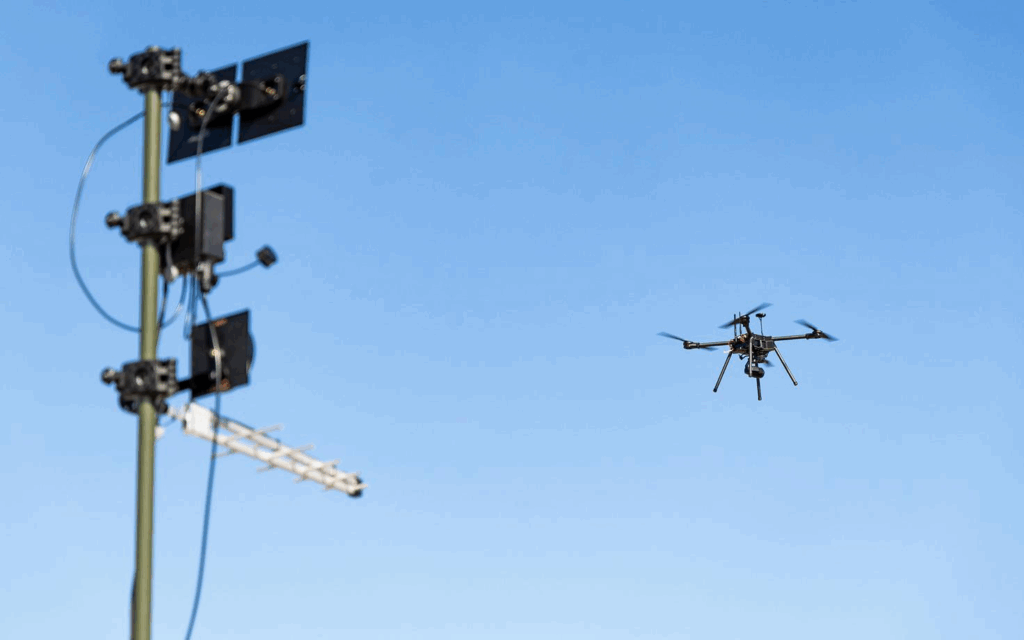The war in Ukraine has turned drones into frontline weapons, reshaping both defence and offence across Europe. What began as low-cost, improvised battlefield tools has become an everyday security test for the European Union and NATO. September alone saw dozens of drone incursions across Poland, Romania, Denmark, Norway, and France, with disruptions ranging from military base flyovers to airport closures.
What’s Happening & Why This Matters
Experts describe these incursions as part of hybrid warfare — operations meant less to inflict direct damage and more to destabilise economies, sow fear, and test European unity. Christophe Gomart, former French military intelligence chief, warned that each drone sighting carries multiple possibilities: “loss of control, deliberate provocation, or probing Europe’s defences.”

At least 10 European countries have reported incursions in recent months. Poland faced one of the largest incidents when 19 Russian drones entered its airspace on 9 September, with several shot down. Romania scrambled F-16s after Russian drones entered its skies during Ukraine strikes. Denmark shut five airports after coordinated drone sightings, while Norway briefly closed Oslo airport. France reported drones over its Mourmelon-le-Grand military base. And Germany logged 144 drone overflights this year, most near airports.
The ambiguity around these incidents fuels unease. Russia denies involvement, but experts say Moscow benefits from confusion. Michel Liégeois of the University of Louvain explained, “the lack of clarity magnifies public anxiety, making societies feel vulnerable.”
Defence: Europe’s Patchwork Protections
Europe’s defensive readiness is uneven. Eastern states like Poland and Lithuania see Russia as the main threat and push for stronger NATO-backed air defences, while southern members focus on migration and other concerns. France showcased anti-drone systems during the 2024 Olympics, but these capabilities remain patchy across the bloc.

To address the threat, the European Commission proposed a “drone wall”— a detection and response network across the eastern border, involving ten states and Ukraine. Estonian MEP Riho Terras compared it to Israel’s Iron Dome, though experts caution against relying too heavily on a “wall” that can be bypassed. French general Gomart stressed investment in new tools like laser weapons that neutralise drones without civilian risk.
Offence: Cheap Drones, Expensive Responses
The challenge for Europe is both economic and military. Attacking drones can cost a few thousand euros, while intercepting them may require missiles worth millions of euros. Terras warned that Europe cannot afford to counter “heap provocations with expensive jets.” That mismatch pushes nations to innovate in cost-effective anti-drone technologies.
Meanwhile, drones as offensive weapons remain highly effective. Lithuania recently recovered a drone armed with explosives. Poland continues training with Ukrainian forces in anti-drone tactics. Even without carrying payloads, drones can disrupt airports, transport systems, and supply chains — causing massive financial damage at little cost to operators.
Safety: Unity as EEurope’sShield
Despite repeated incursions, EU leaders emphasise unity as their strongest defence. Italian MEP Salvatore De Meo argued that President Putin is testing Western resolve, primarily for political messaging rather than battlefield gains. Brussels-based analyst Farah Duquesne Weber framed it bluntly: “Each incursion is a test of Europe’s cohesion. These actions seek to divide public opinion and fuel anxiety. Unity is the most effective defence.”
The EU’s upcoming Copenhagen summit will debate how to fund and implement the drone wall while addressing internal disparities. As the Commission’s Thomas Regnier put it, “Building a wall with holes will not work. We need one shield stretching from north to south.”
TF Summary: What’s Next
The drone incursions expose how warfare tech is no longer confined to battlefields. Cheap, small, and hard-to-trace drones can disrupt entire economies, test defences, and unsettle societies. Europe must accelerate both investment in defensive technologies and coordination across member states. Without stronger and more unified protections, even low-grade drone operations will keep Europe on edge.
MY FORECAST: Expect Europe to expand the drone wall idea into a layered defence system — mixing lasers, jamming, and AI-driven detection — while also tightening rules on civilian drone use near sensitive areas.
— Text-to-Speech (TTS) provided by gspeech


